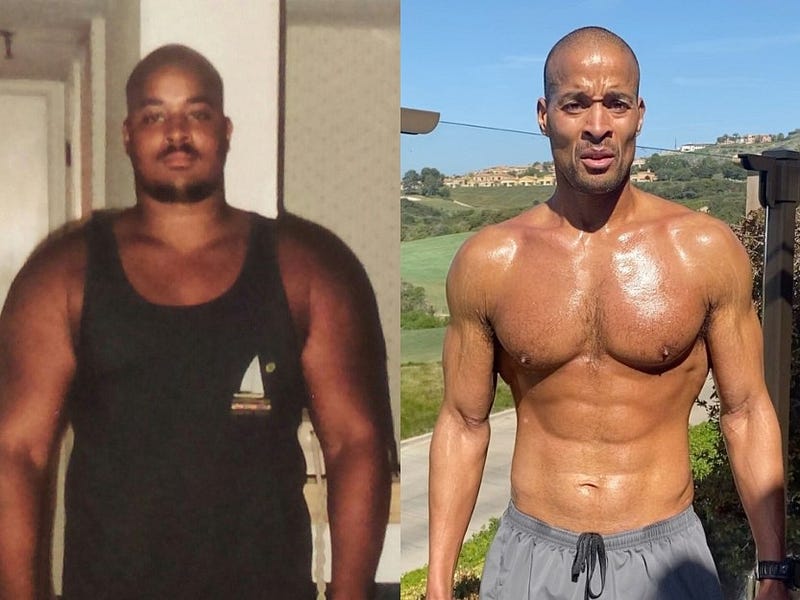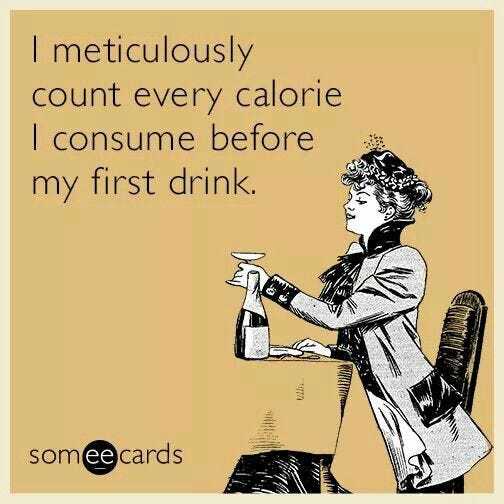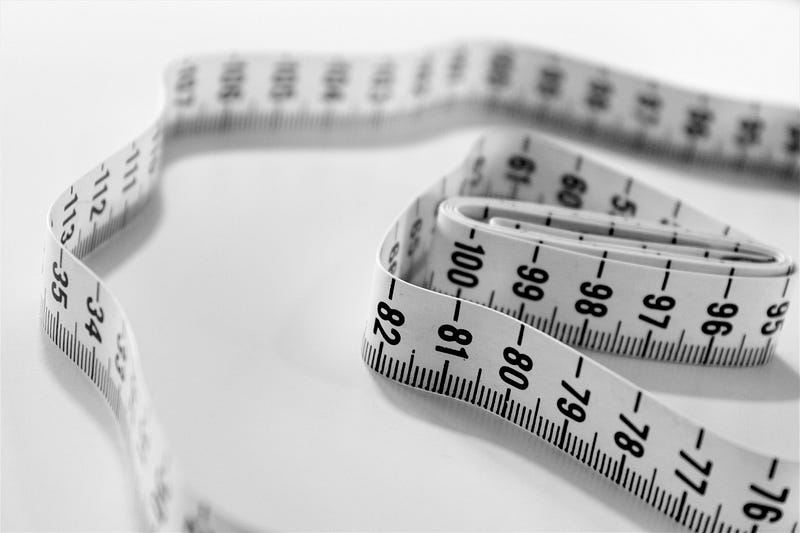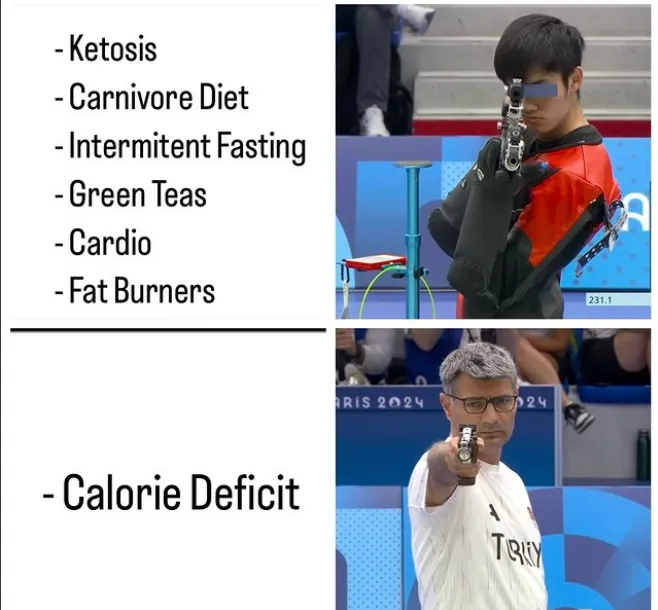
Diets have become increasingly popular as more people strive to lose weight or get in shape.
A simple Google search for “diet” brings up countless articles and recommendations for the best weight loss methods.
The rise of high-calorie processed foods, larger portion sizes, and reduced physical activity have contributed to higher rates of obesity compared to previous generations.
In response, entire industries and services have emerged to address the problem. Medications like Ozempic and other weight loss drugs have been designed to address this problem.
You have probably explored different dieting strategies at some point out of concern for your weight, and most people do the same for similar reasons.
Add social media to the mix — where influencers and regular folks often display their bodies and transformation journeys — and you have a double-edged sword.

On one hand, seeing someone else’s transformation can inspire and motivate you, showing that consistency and discipline can lead to similar results.
On the other hand, body dysmorphia, feelings of inadequacy, and a constant cycle of comparison could creep in, even when you’re already in good shape.
Couple this with the simplicity we inherently seek in things, and we are easily vulnerable to quick-fix promises promising fast, effortless results.
FADs
A fad diet is a trendy weight-loss plan or eating pattern that promises quick results, often with little effort and little scientific report.
They quickly gain attention due to media hype, celebrity endorsements, or bold claims of drastic transformations.

Examples of fad diets include the cabbage soup diet, the grapefruit diet (the fruit burns the fat), and juice cleanses (drink fruit or vegetable juices to detoxify the body).
FAD diets attract people because they offer fast results in a society that values instant gratification.
Celebrity and influencer endorsements further boost their appeal, while the sense of community with others following the same diet makes it easier to stick with.
Given how viral and misleading these diets can become, it’s easy to lose sight of the true mechanisms behind sustainable weight loss.
Calorie Science
A calorie is a unit of energy.
In nutrition, calories refer to the energy people get from the food and drink they consume and the energy they use in physical activity.
Calories are listed in the nutritional information on food packaging. Even when labels are absent, there are apps available that help track how many calories you’re consuming.

The Calories In vs Calories Out (CICO) model simplifies the relationship between calories consumed through food and drink and calories burned by the body through basic metabolic functions (breathing, digestion, thinking) and physical activities (exercise).
The balance between calories in vs out determines whether you maintain, lose, or gain weight over time:
- Caloric Surplus (Calories In > Calories Out): If you exceed the calories your body needs to maintain its current weight, the excess is stored as fat, which leads to weight gain.
- Caloric Deficit (Calories In < Calories Out): If you eat fewer calories than your body requires, it taps into stored energy (primarily fat) to make up for the difference, leading to weight loss.
- Caloric Maintenance (Calories In = Calories Out): When the calories you consume match the calories you burn, and your weight remains stable.
So to lose weight, you need to be in a caloric deficit.
The Balance Sheet
While CICO (Calories In, Calories Out) provides a basic framework for weight management, the reality is more nuanced than simple mathematics.
At its crux, CICO is based on the First Law of Thermodynamics (Law of Energy Conservation) — energy can neither be created nor destroyed, only converted from one form to another.
Think of your body as a bank account.
Calories in are deposits (income) and calories out are withdrawals (pay rent, buy stuff).
If you withdraw more than you deposit, your balance decreases (calorie deficit).
However, here’s where things get interesting: The First Law of Thermodynamics assumes an isolated system, like a perfectly insulated thermos that doesn’t exchange energy with its environment.

The human body, however, isn’t an isolated system.
It is constantly exchanging energy with its surrounding environment through processes like breathing, eating, and sweating.
The human body also adapts depending on energy demands. In a calorie deficit, your body may slow down your metabolism, making weight loss harder over time.
Hormones also play a crucial role: when you eat less, hunger hormones increase, making it harder to maintain that deficit.
Quality matters too.
Consider this: 200 calories from lean chicken breast affects your body very differently than 200 calories from coke.
You have a good guess on which option will keep you satiated for longer.
Calorie Deficit is King
While the CICO model isn’t perfect, it forms the foundation of nearly all weight loss strategies.
For example on a keto diet, people consume calorie-dense foods like cheese, butter, olive oil, and fatty meats. These high-fat foods are highly satiating, making people eat less overall, and creating a deficit.
Whether it’s 16/8, 18/6, or OMAD (One Meal A Day), fasting simply reduces your eating window. Fewer hours to eat typically means fewer calories consumed, regardless of the other benefits fasting may offer.
The carnivore diet, which is primarily protein-based, has a similar effect. Protein is highly satiating, making you feel full faster, and it’s difficult to overeat it in large quantities.
Consider this: meeting a 2000-calorie requirement through pure protein would mean eating about 6 chicken breasts or 5 steaks daily — a feat few could manage.

Vegan and vegetarian weight-loss diets work similarly, often emphasizing protein-rich foods like lentils that increase satiety and naturally reduce overall intake.
Even prescription medications like Ozempic create deficits indirectly by suppressing appetite or boosting metabolism, ultimately affecting calories consumed and burned.
The McDonald’s diet that went viral on TikTok also follows this principle.
It gained attention when a 56-year-old man from Nashville ate only McDonald’s three times a day for 100 days, avoided snacking, and lost nearly 60 pounds (27 kg). This shows that even a nutritionally poor diet can lead to weight loss if a calorie deficit is maintained.
Even FAD diets, which often capitalize on people’s desire for quick results, can cause weight loss if a calorie deficit is sustained over time.
Fat Loss vs Weight Loss
While it is possible to lose weight even on FADs, we often overlook how that weight is lost.
Sure, seeing the number on the scale drop, your waistline shrink, and your face appear slimmer can be exciting. However, you might start to notice other, less desirable changes.
You may feel more sluggish throughout the day, notice a decline in your strength at the gym, and even experience disruptions in your sleep.
These are common side effects of a calorie deficit, particularly when the quality of the nutrients in your diet is lacking.

Being thin doesn’t equate to being healthy. In fact, there are many people who may be overweight but are healthier than their thinner counterparts.
You could lose weight on a McDonald’s, pizza, or cookie diet as long as you’re in a calorie deficit, but the nutrient quality would be poor.
While you would shed fat, you would likely also lose muscle mass in the process.
Muscle mass is important for promoting longevity and overall health as you age. Maintaining healthy levels of muscle mass has been linked to improved quality of life, and reduced risk of chronic diseases.
Although achieving a calorie deficit is simple in principle, the quality of that deficit is essential for your overall health.
The real goal isn’t just watching numbers drop on a scale — it’s losing weight while maintaining your health and vitality.
The Long Game
James Carse, in “Finite and Infinite Games,” presents an interesting perspective through game theory.
He contrasts finite games (played to win) with infinite games (played to keep playing).
In relationships, it is the difference between getting married and staying married.
In a career, it’s getting a promotion vs finding meaningful, fulfilling work.
In wealth, it’s making a million dollars vs achieving financial independence.

His core message? Approaching life with an infinite mindset makes it more fulfilling and purpose-driven.
When applied to health and weight loss, instead of focusing on a short-term goal like losing 10 pounds, it’s more sustainable to aim for maintaining a healthy lifestyle — weight loss being a subset of that.
This mindset shift encourages the development of lasting habits, rather than chasing quick fixes.
You won’t quit your diet when the scale fails to budge, and you won’t easily be swayed by quick fixes that promise rapid results. Weight loss is challenging, and adding dietary restrictions makes it even more so.
However, approaching it as a gradual, health-focused journey rather than a race to a number on the scale sets you up for lasting success.